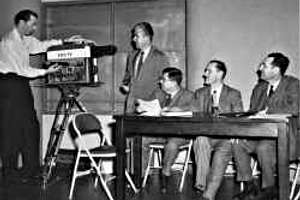 One of the questions that was asked before beginning work on the new California Academy of Sciences was what should a natural history museum in the 21st century look like? The architect Renzo Piano felt that it was stripping away halls and letting light and transparency foster community and growth. The exhibit designers believed it was breaking down the linear stories and creating a space for people to formulate their own story through vignettes of content. Ryan Wyatt, director of the Planetarium and Science Visualization believed that the museum should not just be within the walls but rather mesh and evolve through multi-media.
One of the questions that was asked before beginning work on the new California Academy of Sciences was what should a natural history museum in the 21st century look like? The architect Renzo Piano felt that it was stripping away halls and letting light and transparency foster community and growth. The exhibit designers believed it was breaking down the linear stories and creating a space for people to formulate their own story through vignettes of content. Ryan Wyatt, director of the Planetarium and Science Visualization believed that the museum should not just be within the walls but rather mesh and evolve through multi-media.
Science in Action is metamorphosis of creating a "un-museum" through multi-media as well as a tie with the Academy's past. Our in-house news program filmed at the Academy was branded the same name. Today, Science in Action exists on the floor as a breaking news exhibit. The exhibit contains four screens that scroll through four breaking stories about science. One story is changed out every week, thus all stories revolve out within a month's time. Science in Action will not end there. The production team is working on the next phase of uploading content on the Internet along with surveys and special clips to facilitate interaction. Once a month, evening programming beginning in mid winter will use content in Science in Action for programming. The experts will be here in person to go more in depth. The stories are not just for the screen but spread out through the museum as well as through community partners and experts.
I was asked recently to join the content team for Science in Action to get a real feel for the production side in order to better deliver programs for the evening events. The production team consists of staff from research, the aquarium, production, public programs and education. We meet once a week to brainstorm and once a story is chosen the production team works in collaboration with the content team to make an idea into a news story with a week turn-around. Last week, we did a piece on the Cosco-Busan oil spill for its year anniversary. I was able to help edit the script through the mock up, rough-cut, interviews, and final visual edit. A colleague and I drafted a summary and survey of the piece to be used in connection. It was a great team effort. This team effort will take place every week to turn out more than 60 stories per year. It is also an evolving process with equal input from the content and production team and will generate not only content for the floor, but for the web, partners, iTunes, and public programs.
It is projects like this that make me love where I work, as I am challenged to be informed and enmeshed in all the amazing discoveries in technology and science. Natural museums in this day and age must be cognizant that information is available everywhere. Museums that strive to be current have to embrace the information age and be comfortable updating content on a more regular basis as well as interacting with their virtual audience. Exhibits and multi-media were designed for the Academy with this in mind and will change accordingly. Like research expanding with new discoveries, our public floor will change in pace with science.
37.7697 -122.466
